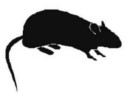
A tool to map orthologous protein post translational |
Step #1: Upload input data setPrepare your input data set in the following format:
For example: |
||||||||
|
Note: If you don't have your own data set, you can try it with one of the following. The first one, a human-rat sample data set (download), contains information for human skeletal muscle insulin-regulated phosphoproteome (1187 human sites quantified; 551 unique protein accessions) and rat L6 skeletal muscle myotube insulin-regulated phosphoproteome (10,033 sites quantified; 3050 unique accessions). Since, this file contains a large number of records, it might take a while to complete mapping. For a quick test, use this human-mouse sample data set (download) or this human-rat sample data set (download). |
||||||||
|
(or type/copy directly into the table below) |
||||||||
Preview of input data set |
||||||||
Step #2: Run mapping algorithmAfter successfully uploading the input data set, you can now run the PhosphOrtholog mapping algorithm. This will enable mapping between human-mouse, human-rat, or human-fly phosphorylation sites quantified in independent MS-based phosphoproteomic experiments. The mapping result will be displayed under step #3. |
Step #3: Download results data setYou can find the mapping result below. The first two columns represents the human identifier and site information which is mapped to the orthologous sites in the model organism shown in the third and fourth columns. The “Score” represents the similarity score from the pairwise sequence alignment of the orthologous human and MO protein sequences. If the sites are known and reported in PhosphoSitePlus, the 'Score' column says "PhosphositePlus DB". |
|



